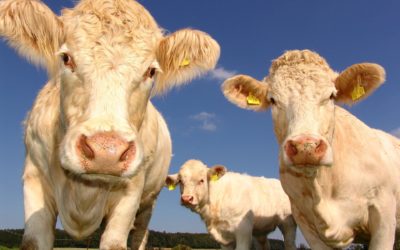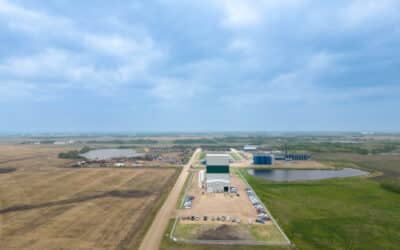The certified organic market has seen a great increase over the past few years, reaching US$63 billion, compared to US$48 billion in 2016. The land used for growing organic crops has also massively increased, almost doubling between 2016 and 2022, according to Nate Powell-Palm, owner of Cold Spring Organics.
The rapid expansion reflects consumer’s want for traceability of products. Every organic product found in grocery stores can be traced back to the field where its ingredients were grown, which is a benefit consumers will pay more for. Another component that entices farmers and consumers are the climate benefits that organic offers, as studies have shown that organic soil can sequester more carbon and has a better water holding capacity.
Organic farming reaps many benefits, yet some people who support conventional farming believe that the cons outweigh the pros. For example, a meta-analysis that inspected 164 scientific papers showed that modern conventional farming uses less land for the same value of crops, while organic crops fall 10 to 35 per cent lower on a yield per-acre basis than their counterpart, according to the Genetic Literacy Project.
For conventional farming, pest and disease resistance, faster growth and larger seeds are a few of the highlights that draw farmers away from organic.
Despite the individual benefits of organic and conventional farming, there remains a long-going argument between the two – but there isn’t anything versus when comparing, according to Powell-Palm. As farmers try to get high yields and clean fields, the set of tools used for the varying types of farming are the greatest difference.
“In organic, we’re primarily figuring out how to utilize organic sources of nitrogen, whether it be manure, cover crops or other inputs,” he explains. “Organic primarily relies on the ecological potential of the farm for maximizing those yields. We have a lot of little hammers that we use for things like weed control or good seed considerations for maximizing those yields, as opposed to the really big hammers you might have in conventional, like herbicide or synthetic fertilizers.”
One of the most-widely believed misconceptions surrounding organic farming is cost. Many farmers believe that making the switch to organic will be extremely expensive due to the funds required to become certified organic. In reality, 75 per cent of the cost in the United States is covered by reimbursements from the Farm Bill, leaving a few hundred dollars for the individual to pay out of pocket, says Powell-Palm.
In addition to lower cost requirements for organic certification, there are other short cuts to avoid additional charges when going organic.
“There are things you can do to help that you don’t have to pay for,” says Carrie Spoonemore, co-founder of Park Seed’s From Seed to Spoon. “You can use companion plants and beneficial critters to help you out with pests. You don’t necessarily have to pay for a lot of these organic fertilizers. You can keep it cheap and simple, and it’s not that hard once you know what to do.”
Do Organic Farms Result in Lower Yields?
Many people also believe that organic farming produces lower yields than conventional. While that might have been true in the past, science and research is seemingly catching up, believes Powell-Palm. Data shows that after three to five years, organic yields are almost catching up to conventional yields, though these numbers are dependent on the type of crops grown. Wheat is a crop that can almost match conventional yields, while experts are still working on how to reach the same yields with corn.
The increase in yield is largely due to improved crop rotations where the soil can experience various plant species without the buildup of pressure that farmers would see from planting crop on crop. Succession planting is key to avoid a pest or disease from wiping out the entire crop, says Spoonemore.
The utilization of manure for fertilization and the reliance on pulses and legumes to augment the manure allows the nitrogen to come from a source closer to home. Growing crops in this fashion provides a more resilient system that’s affected less harshly by supply chain shocks that the world has seen over the past year or two, continues Powell-Palm.
“It’s a shorter supply chain in organic, which leads to a more resilient food system, which in turn is something we really need for a growing population. We’re getting parity in yields, and we’ve got a robust system that’s going to result in a more reliable food production system,” he says.
As the agriculture industry looks at the big picture, the two types of farming really aren’t that different and have the same overall purpose.
“The same goals that we have in conventional are the same goals that we have in organic: that we’re able to take care of the soil, have profitable farms, produce good, abundant food crops and do so with style so that we’re able to have good clean fields,” says Powell-Palm.
Related Articles
The World is Getting Used to Abnormal Supply Chains
There Shouldn’t Be a Concern About What You’re Eating
Feds Provide Funding to Bolster Organic, Climate-Resilient Farming





